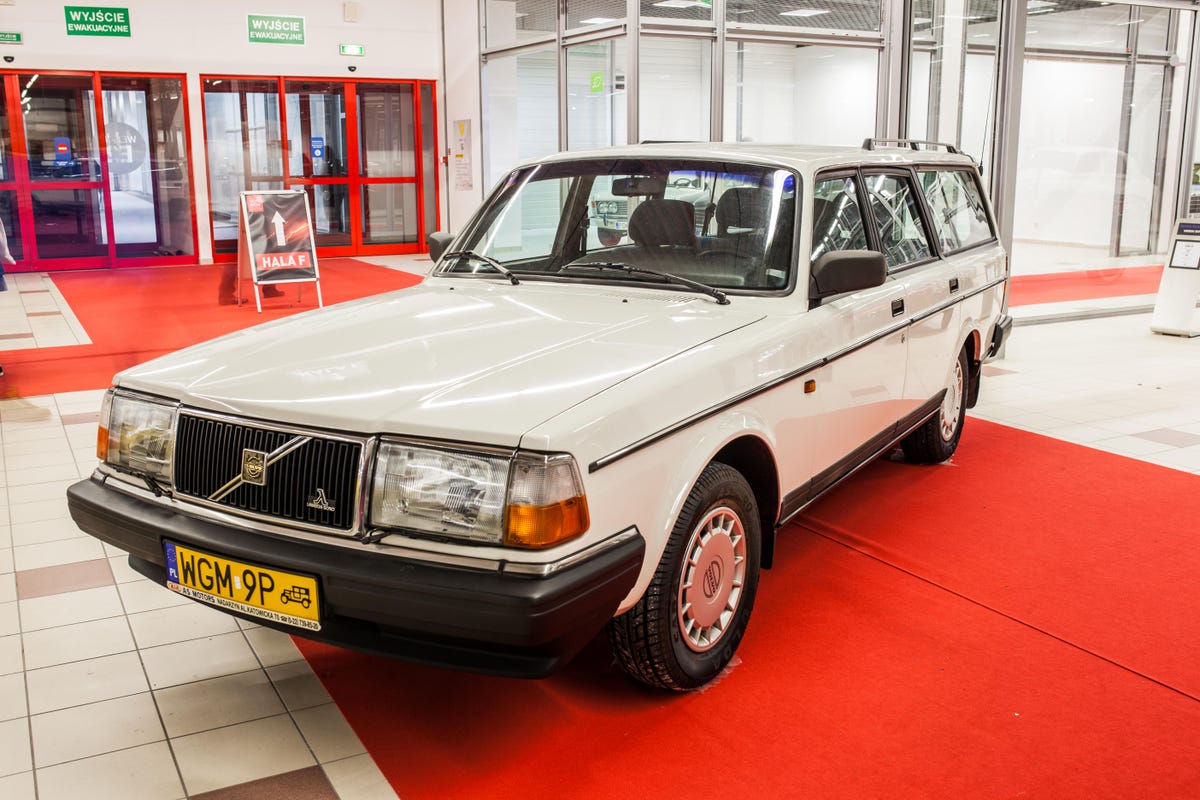Car tech features that Volvo did first
When you think of cutting-edge car tech, do you think of Volvo? Because you probably should.

Volvo introduced car tech you're probably using today...
When you think of tech innovators in the auto industry, you might think of Tesla, Toyota or General Motors. However, Swedish car manufacturer Volvo has actually been credited with introducing many industry-first features over the years, especially when it comes to safety.
In fact, you've probably used at least one of them already today.
Pedestrian airbags
In 2012, Volvo introduced an external pedestrian airbag, designed to protect anyone struck by a Volvo.
Such technology is increasingly commonplace today, especially in countries with tough pedestrian-safety regulations.
The inflatable curtain
The inflatable side curtain, introduced in 1998, reportedly absorbs 75 percent of an occupant's energy when their head is thrown sideways in a collision.
Built-in booster seats
Another child safety feature pioneered by Volvo? The built-in booster seat. The first of these bigger-kid seats was introduced in 1990, and an updated adjustable version became an option in its 2007 models.
Cyclist detection system
At the 2013 Geneva Auto Show, Volvo introduced cyclist detection with full automatic braking. The technology, which uses a radar unit to detect cyclists and pedestrians, was available in seven Volvo models by mid-May of 2013.
The luxury of the S90 Ambience Concept
At the 2018 Beijing Auto Show, Volvo debuted its S90 Ambience Concept car, which featured a few industry-first tech features.
The Ambience, designed as a three-seat luxury vehicle for chauffeured passengers, has a projected video scene on the ceiling of the car, designed to look like what you'd see out of a sun (or moon) roof.
S90 Ambience Concept: Bespoke scents
Other European automakers have introduced perfume dispensers in their HVAC systems, but Volvo's concept takes things a step further.
The Ambience is pre-loaded with bespoke scent formulas that pair with the projected scenery to create a truly immersive riding experience.
S90 Ambience Concept: Smart headrests
And because the experience wouldn't be complete without audio, the rear seats have speakers in the headrests that play corresponding ambient sounds, like a breeze through the trees or the sound of falling rain.
S90 Ambience Concept: An app, of course
Riders can select their preferred theme via a smartphone app.
Roll stability control
Acknowledging the growing popularity of the SUV, Ford -- Volvo's parent company at the time -- added roll stability technology to its existing electronic stability control system.
The technology was introduced to the public in the 2003 Volvo XC90.
The Lambda Sond
The lambda sensor, known more commonly as an oxygen sensor, makes modern emission control possible.
This thumb-size device, which can be found in almost all non-electric cars on the road today, made its automotive debut on a Volvo in 1976.
The three-point safety belt
In 1959, Volvo engineer Nils Bohlin, pictured here, introduced his 3-point safety seatbelt. The feature came standard in Volvo's PV544 model vehicle that same year.
The Centers for Disease Control estimates that the modern seatbelt saves upward of 10,000 lives each year.
Run-off road protection
The 2014 XC90 included industry-first tech in the driver and passenger seats designed to keep occupants firmly inside a car, even if an accident or loss of control pulls the car off the road and into a ditch.
Rear-facing child seats
The engineering of the earliest rear-facing child safety seat was actually inspired by astronaut seats in early space shuttles. This seat design was introduced by Volvo in 1972 in the popular Volvo Amazon.
Blind spot warnings
Volvo first introduced its Blind Spot Information System in 2003. A warning lamp lights up near a door mirror whenever another vehicle enters the Volvo's blind spot. The tech has seen increasing use ever since the release.
Side-impact protection
The Side Impact Protection System uses energy-absorbing materials in the doors and frame to distribute the force of a side impact across the side of the car. This tech was introduced in 1991 in Volvo's 700 and 900 models.